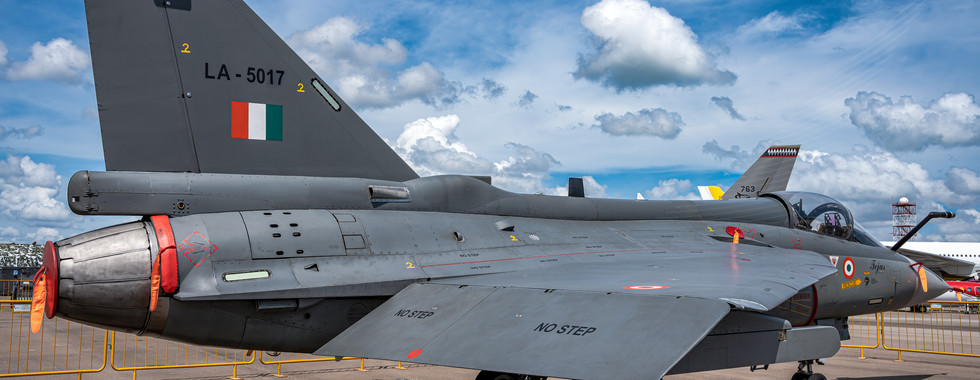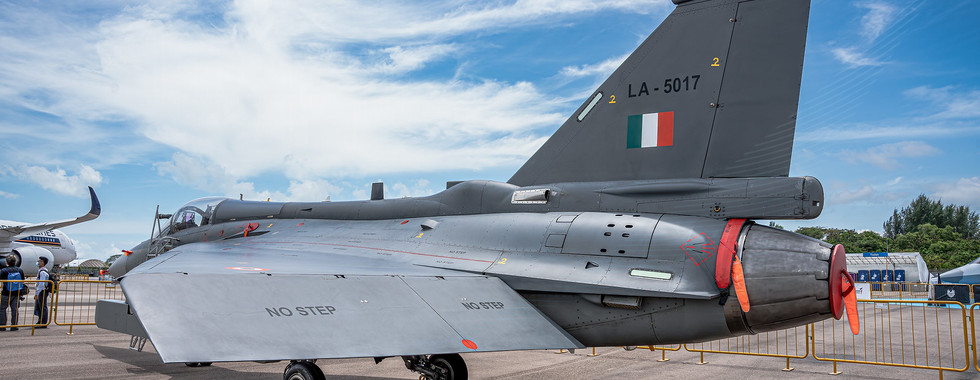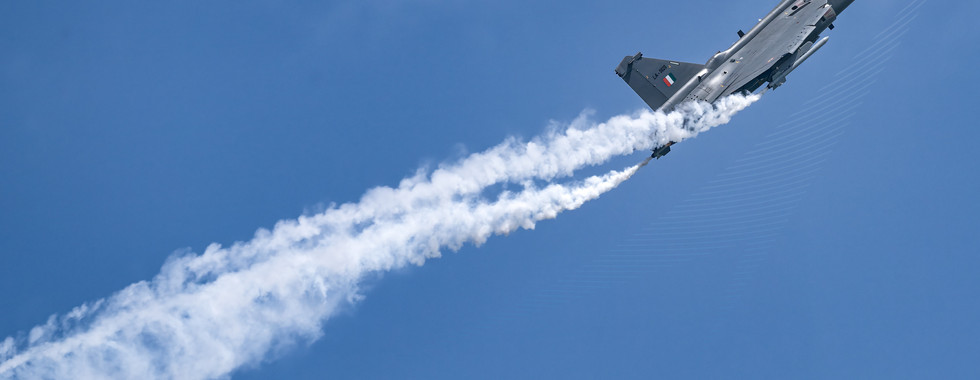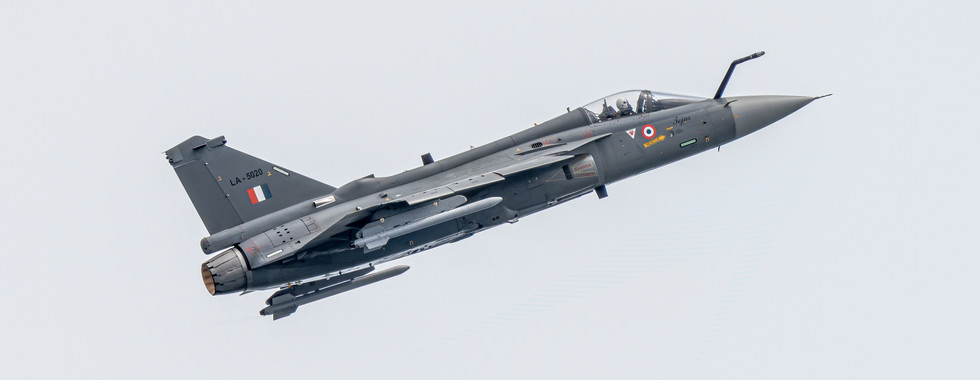INDIA'S VERY OWN LIGHT COMBAT AIRCRAFT
- Bryan Wong

- Feb 23, 2022
- 2 min read

Making its Singapore Airshow 2022 debut is the Indian Air Forces' HAL Tejas, a fourth-generation, delta-winged, single-engined, lightweight, multirole combat aircraft jointly developed by Hindustan Aeronautics Limited's (HAL) Aircraft Research and Design Centre and the Aeronautical Development Agency (ADA). Having made its maiden flight on the 10th of January 2002, the Tejas has since, performed thousands of test flights, some of which include carrier-borne test flights.
Powering The Tejas is a single General Electrics (GE) F404 engine, the same engine used on aircraft such as the Korean Aerospace Industries T-50 Golden Eagle as well as the Lockheed Martin F-117 Nighthawk. The GE F404 outputs 49kN of thrust on full military power (dry trust) and additional 30kN of thrust with the aid of afterburners. This allows the Tejas to reach a maximum speed of 1190 knots (2,205km/h) which is 1.6 times the speed of sound.
The Tejas has a tailless delta wing, similar to that seen on aircraft such as the Mirage 2000 and the Saab 35 Draken. The delta-wing design is inherently unstable and difficult to control, however, the advantages of a delta-winged design are added maneuverability as well as good supersonic speed performance. The fly-by-wire system helps to overcome the instability brought on by the delta wing while allowing the pilot to execute complex maneuvers without worrying about over-stressing the airframe or losing control of the aircraft.
The Tejas comes in 4 variants, the Tejas Mark 1, the Tejas Trainer, the Tejas Mark 1A, and the Tejas Mark 2 with its first flight planned for 2023. The legacy variant of the aircraft (The Tejas Mark 1) comes equipped with an Israeli Aerospace Industries ELTA ELM-2032 Pulse Doppler Radar. This radar allows the Tejas to detect potential air threats and ground threats up to 120 Nautical Miles away and sea threats up to 200 Nautical Miles away. The Tejas Mark 1A on the other hand has an avionics suite centered around the ELTA ELM-2052 Active electronically scanned array (AESA) radar. The EML-2052 can detect airborne threats u to 160 Nautical Miles away as well as land and sea threats up to 107 Nautical Miles away.
Taking part in both the Aerial and Static display segments of the Singapore Airshow, the Tejas certainly did wow the audiences with its agility and speed when it flew over the showgrounds during the aerial display segments last week. With the new Mk 2 variants launching in the year ahead, it is with certainty that the homegrown HAL Tejas will continue to defend and serve the skies of India for the foreseeable future.


































Comments